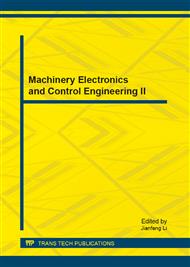p.126
p.131
p.135
p.140
p.148
p.157
p.164
p.169
p.174
Hole Doping Through Indium Intercalation Into Nickel Phthalocyanine
Abstract:
A new intercalation of indium and nickel phthalocyanine(NiPc) thin films is developed by using thermal co-evaporation technique. X-ray diffractometer(XRD) and optical absorption spectroscopy of In-doped NiPc suggest the crystal structure of In-doped NiPc is α-phase as same as that of pristine NiPc. Current-voltage characteristic of Shottky diode fabricated with In-doped NiPc thin film shows the enhancement of charge carrier concentration due to indium doping. Further photoelectron spectroscopy experiments prove that In-doped NiPc is hole transport material.
Info:
Periodical:
Pages:
148-156
Citation:
Online since:
March 2013
Price:
Сopyright:
© 2013 Trans Tech Publications Ltd. All Rights Reserved
Share:
Citation:


